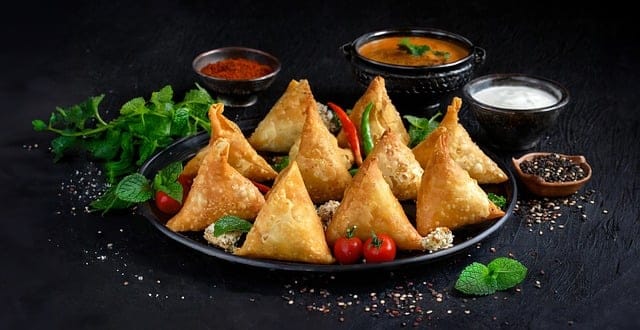3 Irresistible Ramadan Recipes to Spice Up Your Iftar
Ibadah in Ramadan is a multifaceted practice that encompasses various acts of worship, all aimed at enhancing spirituality, seeking closeness to Allah, and fostering personal growth. Food brings people together, satisfies our hunger, and can be a source of comfort and joy. In the context of Ramadan, eating takes on a special significance because of the daily fasting. During Ramadan, Muslims fast from dawn until sunset, refraining from food and drink. The pre-dawn meal, called suhoor, is eaten before the start of the fasting period to provide nourishment and energy for the day ahead. It's important to have a balanced suhoor meal that includes protein, whole grains, fruits, and vegetables to sustain throughout the day. When the sun sets, it's time for iftar, the meal that breaks the fast. Muslims eagerly gather with family and friends to enjoy a variety of delicious foods. Dates are traditionally eaten to break the fast, following the example of the Prophet Muhammad (peace be upon him). After that, a full meal is enjoyed, consisting of a variety of dishes that vary by culture and personal preference. Iftar is a time of celebration and gratitude. It's a chance to appreciate the blessings of food and togetherness. Many Muslims also engage in acts of charity during Ramadan by providing meals to those in need, further emphasizing the importance of sharing and giving. Eating during Ramadan is not just about satisfying physical hunger, but also about appreciating the blessings of sustenance and fostering a sense of community. It's a time to be mindful of the food we consume and to express gratitude.In addition to the pre-dawn meal (suhoor) and the meal that breaks the fast (iftar), there are a few other types of meals that are significant during Ramadan. One of them is called "Taraweeh," which is a special prayer that takes place after the evening meal (iftar). It's a time for Muslims to come together and engage in extended prayers, usually performed in congregation at the mosque. Taraweeh prayers can be quite long, and they provide spiritual nourishment during the holy month. Another meal that holds importance during Ramadan is the "sunnah" meal. This is a voluntary meal that is eaten before the pre-dawn meal (suhoor). It's a way to follow the example of the Prophet Muhammad (peace be upon him), who would sometimes eat a small meal before suhoor to start the day with energy and blessings. Overall, eating during Ramadan goes beyond just satisfying physical hunger. It's a time of spiritual reflection, community, and gratitude. It's a beautiful experience that brings people together and reminds us of the blessings of sustenance. I hope that gives you a better understanding of the different types of meals and their significance during Ramadan.
These are three Irresistible iftar recipes to spice up your iftar
Instructions of bread pockets:
1. Trim the edges of the bread slices and flatten them using a rolling pin.
2. In a bowl, mix the mashed potato, chopped onion, green chilies, cilantro, salt, and pepper.
3. Place a spoonful of the potato mixture onto each bread slice and fold it into a pocket shape, sealing the edges with water.
Lavashak Recipe:

Ingredients:
- Dried fruits (such as plums, apricots, or cherries)
- Sugar (optional)
Instructions:
1. Soak the dried fruits in warm water for about 30 minutes to soften them.
2. Remove any pits or seeds from the fruits.
3. Blend the soaked fruits in a food processor until smooth.
4. Optionally, you can add some sugar to taste if you prefer a sweeter lavashak.
5. Spread the fruit puree onto a paper-lined baking sheet.
6. Bake in a low-temperature oven (around 150°C or 300°F) for (more than two, but not a lot of) hours until the lavashak is dry and leathery.
7. Cut the lavashak into strips or small pieces and enjoy!
Samosa Recipe:

Ingredients:
- Potatoes, boiled and mashed
- Peas
- Onion, finely chopped
- Ginger, grated
- Garlic, minced
- Green chilies, finely chopped
- Cilantro, chopped
- Spices (such as cumin, coriander, turmeric, garam masala)
- Salt to taste
- Samosa wrappers (or you can use spring roll wrappers as a substitute)
- Oil for frying
Instructions:
1. In a pan, heat some oil and saute the onions, ginger, garlic, and green chilies until nice-smelling.
2. Add the peas and cook until they are tender.
3. Add the mashed potatoes, spices, salt, and cilantro. Mix well and cook for a few minutes.
4. Allow the filling to cool completely.
5. Take a samosa wrapper and fold it into a cone shape, sealing the edges with a flour-water paste.
6. Fill the cone with the potato filling and seal the top with the flour-water paste.
7. Repeat the process with the remaining wrappers and filling.
8. Heat oil in a deep pan and fry the samosas until golden brown and crispy.
9. Serve the samosas hot with (sweet and sour fruit mixture) or sauce of your choice.
Enjoy these delicious treats!

